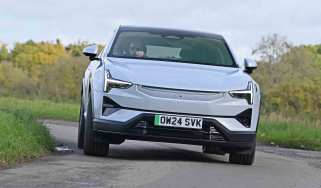Fiat Sedici 1.6
Stop to take pictures of a car in the UK and there's every chance you'll get beaten with a stick until you leave. Thanks to militant environmentalists and the 'not in my back yard' brigade, being associated with motors these days can mark you out as public enemy number one.
In isolation, the Sedici is a decent, honest car with fine dynamics and good off-road skills. But for all its qualities, its identity is in doubt. There's a blandness to the package that goes against current Fiat thinking. Tape over the badges and you could be in any small 4x4. In a brand we look to for flair regardless of price, that's hard to forgive.
Stop to take pictures of a car in the UK and there's every chance you'll get beaten with a stick until you leave. Thanks to militant environmentalists and the 'not in my back yard' brigade, being associated with motors these days can mark you out as public enemy number one.
Thankfully, this isn't the case in Italy, where pitching up in a new car - espec-ially one wearing a Fiat badge - guarantees you the kind of reception usually reserved for the return of long lost sons.
Today, though, things are different. Fiat's latest model - a joint venture with Suzuki - is causing a fuss among the Milanese bystanders. A supermini-cum-4x4, the Sedici is doing a most un-Italian thing: it's dividing opinion. And it's easy to see why. The firm may have had its fair share of joint ventures - the Ulysse and Croma, to name two recent projects - but when it comes to small cars, Italians like to think Fiat knows best.
Used - available now

2023 Ford
Puma
23,462 milesManualPetrol1.0L
Cash £16,100
2022 Nissan
Micra
12,236 milesManualPetrol1.0L
Cash £12,200
2023 MG
ZS
23,513 milesManualPetrol1.5L
Cash £13,000
2025 Jaguar
F-Pace
34,704 milesAutomaticPetrol2.0L
Cash £30,200The Sedici (it means 16 in Italian - ie 4x4) is due here in March, and sees Fiat enter yet another niche market. With the profile and interior space of a standard C-segment car (think Ford Focus) and the off-road ability of a junior 4x4 (Toyota RAV4), the newcomer is what's known in the industry as a 'crossover'.
In terms of exterior design, however, the Sedici is 100 per cent Italian. Both the Fiat and Suzuki versions of the car were penned by Giugiaro, and there's little to dislike about the smooth lines, neat proportions and tidy details. A bit more in the way of Fiat quirkiness would be welcome, but the looks are unlikely to scare any potential buyers off. Given Suzuki's reputation in the field of four-wheel-drive technology, the sturdiness of the Sedici's running gear should also be attractive. The system was designed and engineered by the Japanese firm, and offers a switchable function allowing you to select two-wheel drive, auto or diff-lock for serious mud-plugging.
As a result, the Sedici's four-wheel-drive badge is more than just a showroom gimmick. Unlike many sub-£20k off-roaders, the car has the hardware to back up the rough and ready looks. Indeed, over Fiat's off-road test route, the Sedici barely broke into a sweat.
Two engines will be offered from launch: a 107bhp 1.6-litre petrol unit and a 120bhp 1.9-litre Multijet turbodiesel. The former is mated to a five-speed manual gearbox, while the latter gets a six-ratio manual transmission as standard. While only the petrol car was available for us to drive, the oil-burner will be the pick of the range. The petrol is free-revving and a smooth performer, but the superior torque and economy make the Multijet the better buy.
There's more good news inside. The fit and finish are first class, and although some of the plastics used - particularly those on the door trims - feel rather cheap, the switchgear has a slick operation and the panel gaps throughout are wafer thin. There's a distinctly Japanese flavour to the centre console and dashboard, but you can tell that it has all been built to last.
However, those buyers looking for any clever thinking inside will be disappointed. The seating system is as conventional as they come, and little effort has gone into differentiating the newcomer's cabin from the rest of the B and C-segment offerings.
Conventional also sums up the way the Sedici behaves on the open road. With struts up front and a torsion beam at the back, the car corners tidily and without drama. Body control in bends is particularly impressive considering the higher-than-average centre of gravity. Sharp, precise steering and powerful brakes complete the dynamic package.
Fiat is remaining tight-lipped about pricing and spec, and this will be key to the Sedici's success in the UK's already overcrowded market. If the car arrives at around the £11,000-£12,000 mark, it will represent excellent value. Should that figure creep up to £14,000, it will face a much harder challenge.
PAGE 28: Panda Cross driven







